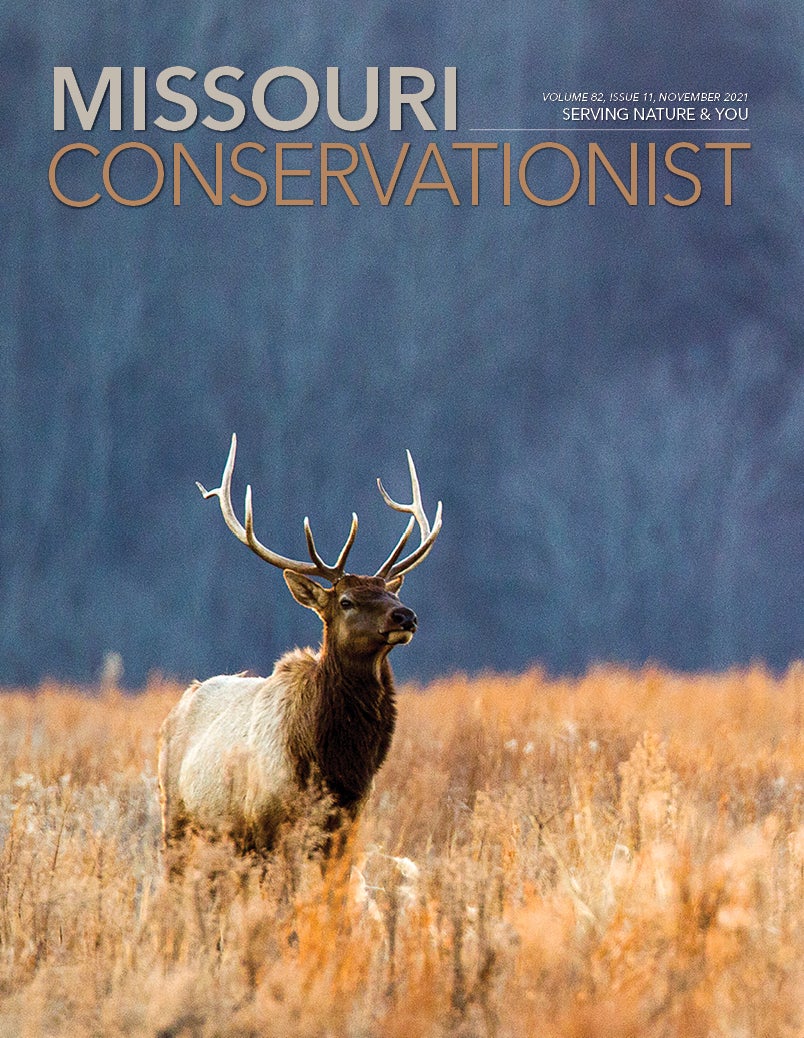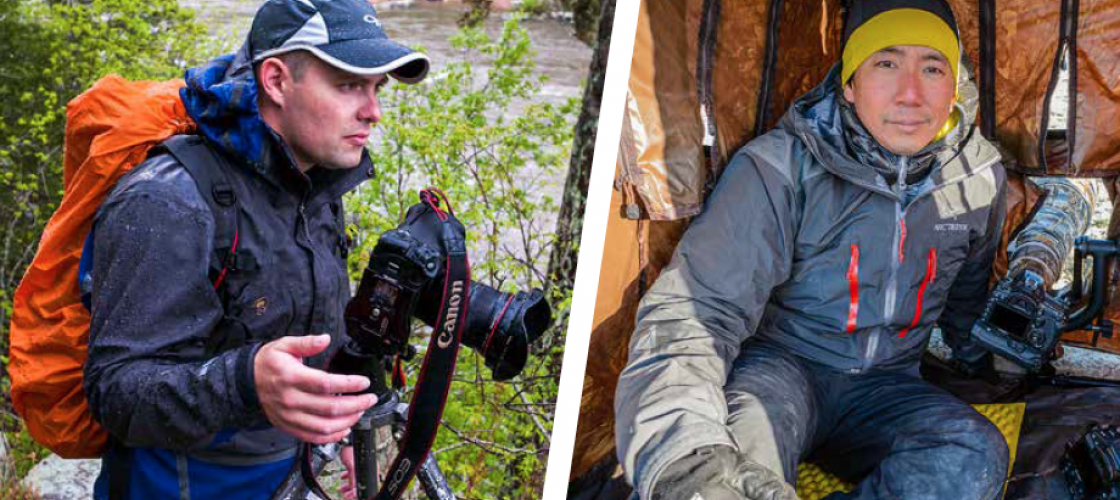
According to lore, when asked how he captured consistently astounding images, photojournalist Arthur “Weegee” Fellig answered, “F/8 and be there.”
The first part of Weegee’s maxim refers to setting the camera at an aperture — f/8 — that yields sufficient depth of field and a reasonably fast shutter speed. The second part alludes to the idea that amazing events unfold constantly, but to capture them in a photo, you’ve got to … well … be there.
Nowadays, anyone can snap a photo. You simply pull out your cellphone and tap the screen. But to create consistently astounding images — especially when nature is your subject — requires a bit more craft.
Nature photographers must know something about their subject: its preferred habitat, biology, behavior. They must be intimately familiar with their cameras and lenses, so they can make split second adjustments to shutter speed, aperture, focus. And — perhaps most importantly — they must have a vision, so they can make the viewer care about a creature or a landscape enough to conserve it.
For nearly two decades, the award-winning photographs of Noppadol Paothong and David Stonner have mesmerized readers of the Missouri Conservationist and Xplor. Recently, we sat down with Nop and Dave and asked them to tell us what went into making some of their favorite images.
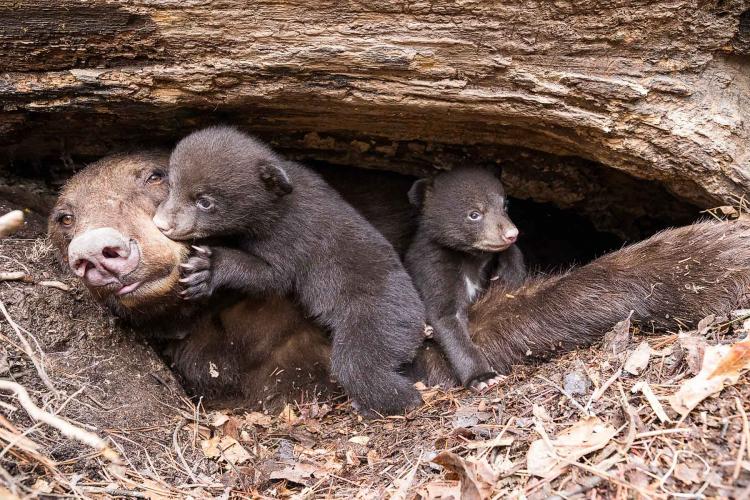

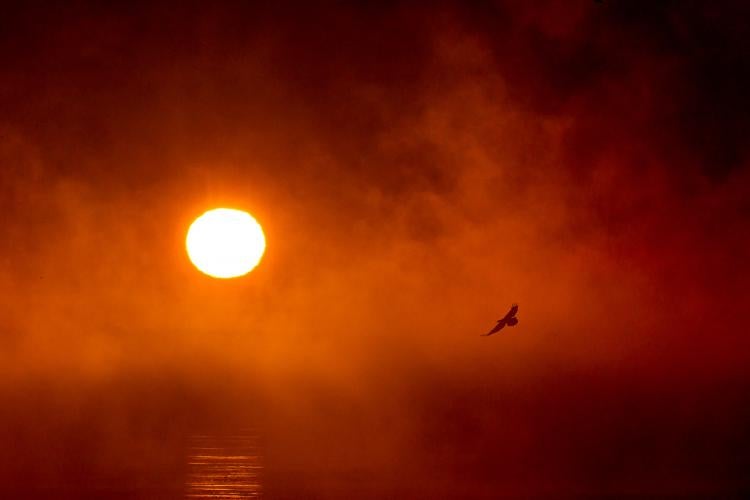
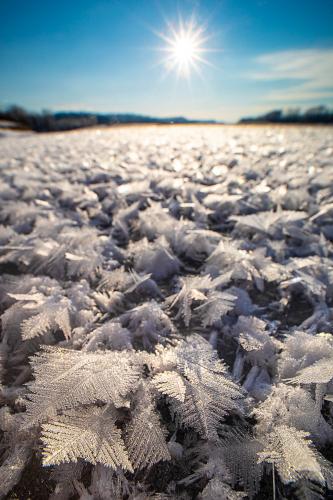
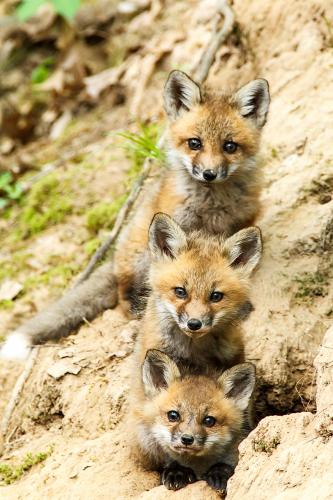



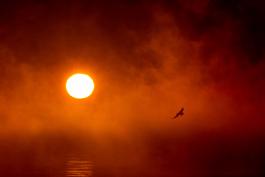

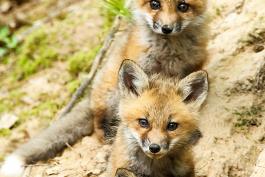

Title
Black Bear with Cubs
Black Bear with Cubs
by Noppadol Paothong
I went along with a bear biologist one winter day to survey bear dens. While she checked on the health of the bears, I shot photos.
For this shot, I used a wide-angle lens and laid on my stomach right in front of the den. The best zoom lens is your own two legs!
It’s important to pay attention to an animal’s facial expressions. They communicate a lot. Here, mom is still groggy and sleepy, but her cubs are awake and active. You can tell by their expressions that they’re relaxed and not too worried about me or the biologist.
11–24mm lens • f/8 • 1/160 sec
Title
Northern Harrier vs. Prairie-Chicken
Northern Harrier vs. Prairie-Chicken
By Noppadol Paothong
This photo took me seven years to get.
I’d been photographing prairie-chickens for many years, and I’d seen harriers swoop down on them many times. But I was never able to get photos of it happening.
I saw this harrier gliding over the prairie, and all the other chickens flew away — except for one dominant male. The harrier dive-bombed him several times. Looking through my long lens was like looking at the sky through a drinking straw. Just finding the harrier in the frame was a challenge!
I held down the shutter button for one of the swoops. Back then, my camera could only shoot three frames per second. I caught four frames, and just one of them was sharp. See how the grass fades in and out of focus? The depth of field was really shallow. Luckily, both the hawk and chicken were in it. If either had been a few inches up or back, they would have been blurry.
Right after I snapped this photo, the harrier flushed the chicken, flew after it, and pinned it to the ground. But the chicken eventually got away.
500mm lens • f/4 • 1/4000 sec
Title
Bald Eagle at Sunrise
Bald Eagle at Sunrise
By Noppadol Paothong
This photo was shot on the coldest day in Missouri in nearly two decades. I left home at 2 a.m. The radio station said the wind chill felt like negative 35.
The colder it gets, the better it is to photograph eagles. The Mississippi River freezes upstream from Clarksville, which pushes eagles down to us. Cold keeps the eagles active, looking for fish.
Extreme weather also offers unique opportunities. Even though it was super cold, there was no wind. So, fog built up above the river. When the sun came up, I framed it shining through the fog and waited for an eagle to fly into the shot.
I like how the eagle leads the eye right into the sun. Everything worked out the way I planned. It doesn’t always happen that way.
300–800mm lens • f/25 • 1/8000 sec
Title
Frozen Missouri River
Frozen Missouri River
By Noppadol Paothong
This past January, I went for a weekend hike with my family at Rocheport. It was a very cold morning, and we’d had temperatures below zero for several days in a row. I’ve often seen pancakes of ice flow down the Missouri River, but I’ve never seen it frozen completely solid.
I took several landscape shots, and they were fine, but they didn’t really capture what I wanted. So, I thought, “What if I get closer?”
I put on a macro wide angle and laid down on the ice to focus on the lacy frost. The frost was very delicate. If I bumped it, it would break. If I got too close, it melted from my body heat. From a distance, I picked the best formation I could see and crawled out to it. I managed to get several shots. This one is my favorite. I think it shows the story of a frozen river the best.
15mm lens • f/22 • 1/320 sec
Title
Fox Kit Trio
Fox Kit Trio
By Noppadol Paothong
Someone called the office and asked if I wanted to come see the foxes on their property. When you get these calls, you never know if they’ll pan out. But the landowner showed me this den dug into the side of a ravine, and it looked active. I set up my blind about 100 feet away and waited.
At first, mom was very wary. Foxes can see, hear, and smell you. So, it doesn’t matter what kind of blind you use or how well hidden you are. They know you’re there.
I came back to the blind for five days in a row before mom’s behavior returned to normal. She still knew I was there, but she’d decided I wasn’t a threat to her kits. And eventually, out popped the kits — one, two, three — and I snapped this shot.
They could hear my camera click. That’s what caused them to pause and look.
600mm lens with 2X teleconverter • f/10 • 1/100 sec
Title
Monarch Caterpillar Hatchling
Monarch Caterpillar Hatchling
By Noppadol Paothong
I saw a monarch lay an egg on a milkweed leaf. I monitored the egg for three or four days, waiting for it to hatch. When the tip of the egg turned black, I knew the caterpillar would come out soon. Still, it took several hours for the little guy to emerge.
I used a macro lens that can shoot five times life size. The depth of field on a lens like this is tiny. A slight movement of just a couple millimeters — like if the wind blows the leaf — will throw the image out of focus. Luckily, I was able to get a sharp photo just after the caterpillar chewed its way out of the egg.
I like this shot because of all the details that most people don’t get to see: the caterpillar, the chewed-up egg, and even an aphid on top of the egg, all in one shot.
65mm, 5X macro lens • f/8 • 1/250 sec
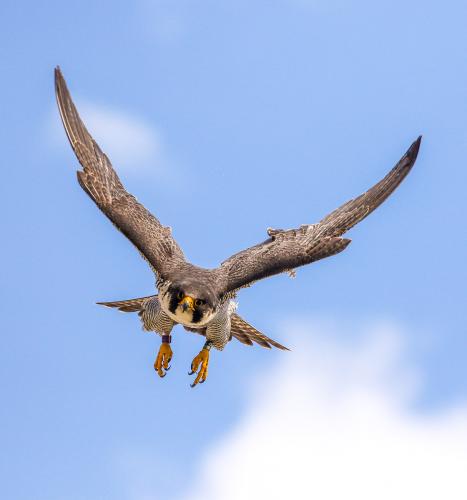


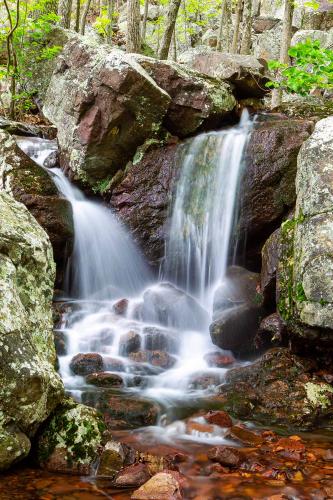
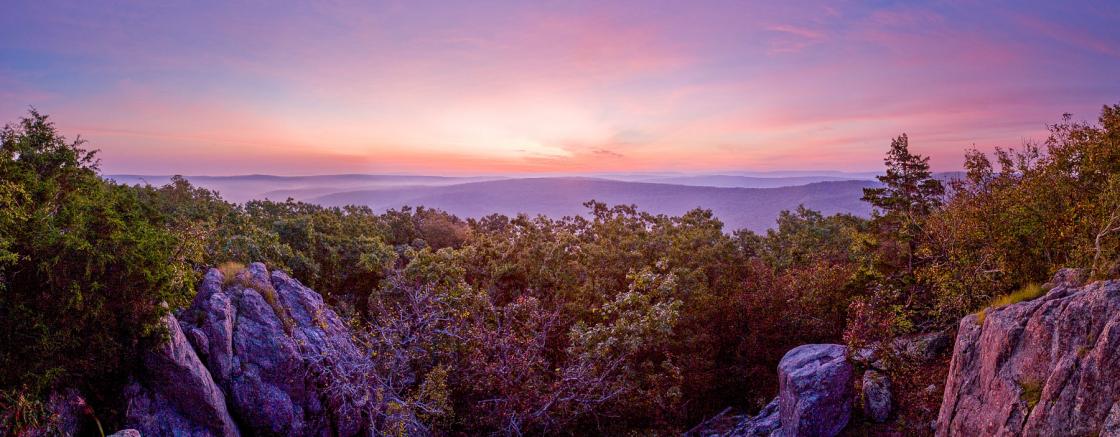


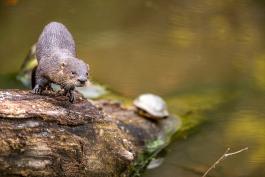
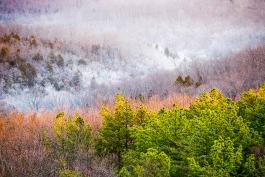


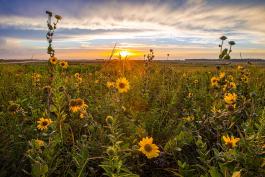
Title
Swooping Peregrine Falcon
Swooping Peregrine Falcon
By David Stonner
There’s a pair of peregrines that nest every year at the Portage des Sioux power plant near St. Charles. A biologist was doing nest checks, and I got to tag along.
As we climbed up the side of a cooling tower, the female became quite irritated with us. We had to wear hard hats because she kept swooping down on our heads. Needless to say, it’s quite thrilling to be dangling on a catwalk 200 feet above the Mississippi River and have nature’s fastest creature dive-bombing you.
Because of her speed, getting her in the frame — and in focus — was a challenge. I used a 100–400mm zoom. This made it a bit easier to zoom in quickly as she dove. 500mm would have been too bulky and unwieldy.
At one point she took a break from whacking the biologist on the head. She perched on the railing of the catwalk to squawk and give us a piece of her mind. She’d been hunting recently, probably for food for her chicks. You could see bits of meat and feathers on her beak.
Just being able to be that close was amazing.
100–400mm lens • f/5.6 • 1/4000 sec
Title
Curious River Otter
Curious River Otter
By David Stonner
A farmer called the office about a river otter in his pond. Over the next two weeks, I went to his farm before sunrise and hid in a goat hut about 50 yards from the pond. The musk from the goats was overwhelming, and I had to wear rubber boots because of all the manure.
I could set my watch by that otter! At 6:30, she’d pop over the pond bank, work her way around the pond — always counterclockwise — haul herself up on the same log to eat or shake off, and then disappear by 7:30.
Most animals are creatures of habit, including people. You get up at a certain hour, pour a cup of coffee, read a newspaper, check your phone. Animals have their own routines. This otter taught me that, and it’s been a revelation that’s served me well as a wildlife photographer.
I think the photo captures the playfulness of these funny, curious creatures. Shortly after I snapped this shot, the otter batted the turtle off the log. I don’t know why. Just to be ornery, probably.
500mm lens • f/5.6 • 1/400 sec
Title
Frosty Sunrise at Spring Creek Gap
Frosty Sunrise at Spring Creek Gap
By David Stonner
I was driving down Highway 63 on my way to a photo shoot and noticed this beautiful frost coating everything in the valley. Back then, there was a fire tower at Spring Creek Gap, so I drove there as quick as I could.
As I was running up the steps of the tower, the sun was starting to hit the tips of the pine trees. I had to work quickly because the sunlight was burning the hoarfrost off everything it touched.
People often ask me, “How can I get better landscape photos?” I tell them, “Use a telephoto lens.” A wide-angle isn’t always best for landscapes. A telephoto allows you to extract snippets of the scene and compress perspective to stack up the foreground, middle ground, and background.
To me, this photo encapsulates the marriage of late winter and early spring. It shows lots of transitions: winter fading into spring; the interplay of warm sunlight against a cool, frosty valley; green conifers and gray hardwoods. A few minutes after I took this shot, the frost was gone.
120–300mm lens • f/4 • 1/80 sec
Title
Mina Sauk Falls
Mina Sauk Falls
By David Stonner
Mina Sauk is just a lovely place. It’s the state’s highest waterfall from top to bottom. There are others that have a longer single drop. This one has a lot of stair-steps that are really interesting. Sometimes it’s dry, but it flows well after a nice rain. Missouri is not abundant with waterfalls, so this is a draw.
If I’m rained out when I’m shooting elsewhere in the Ozarks, I know at least I can pivot and get pics of Mina Sauk.
Sometimes I park at Taum Sauk State Park and take the short walk in. But if I have time — half a day or so — I’ll park at Ketcherside Mountain Conservation Area. It’s a longer, more rugged hike, but there are lots of glades and vistas to shoot along the way.
I used a long shutter speed to get the smooth, flowing effect of the water.
24–70mm lens • f/11 • 2 sec
Title
Bell Mountain Sunrise
Bell Mountain Sunrise
By David Stonner
I made this photo while I was working on a story about the Ozark Trail (OT) for the Conservationist. There’s a spur off the OT that follows a ridgeline and leads to this spectacular vista. I hiked in the night before and set up camp. This series of photos was literally shot out of the front door of my tent the next morning at sunrise.
I had the camera on a tripod and snapped a photo, panned a little to the side, made sure the next view slightly overlapped the previous one, snapped another frame, and continued this way until I had about six images I could stitch together to create this panorama.
I like this photo because it’s a wonderful reminder of an awesome weekend spent discovering a new — at least to me — corner of the Ozarks. It’s almost a vacation photo that I took for work. It makes me want to go back.
24–70mm lens • f/16 • 1/2 sec
Title
Sunset at Bushwhacker Prairie
Sunset at Bushwhacker Prairie
By David Stonner
To be honest, I’d almost given up on this shot. There was cloud cover from horizon to horizon. And the light was just gray and flat and overcast and boring.
So, I was picking ticks off my legs and getting ready to pack up. Then a gap in the clouds opened, and sunshine broke through and backlit the wildflowers.
That’s what I like best about this photo: the luminous quality of the light coming through — rather than on — the petals, which gives them a warm glow.
I only had a few minutes. Snap, snap, snap — just a handful of photos. And then the sun dropped behind another cloud bank, and the light was gone. It’s a little moment I caught because I stuck it out.
So, here’s a pro tip: Don’t leave too early. You might miss the perfect moment.
16–35mm lens • f/11 • 1/30 sec
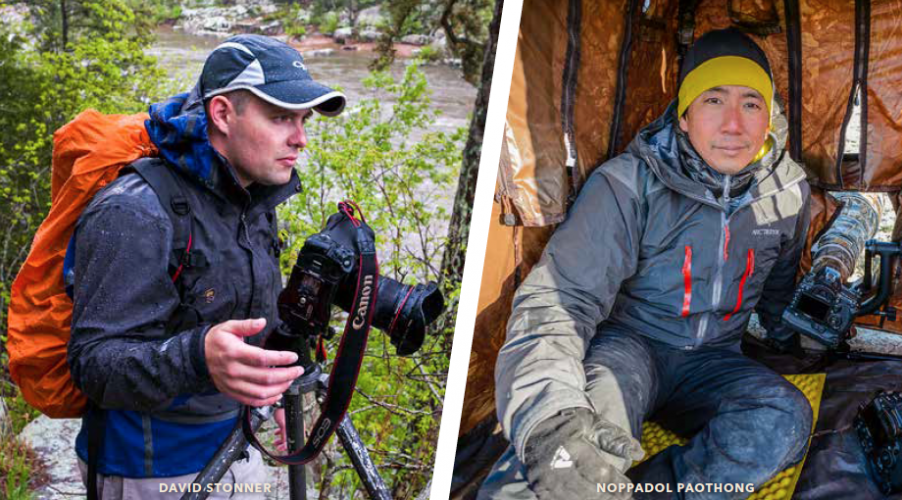

Also In This Issue
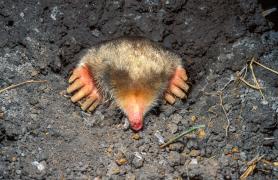
Ferocious, fascinating, and sometimes infuriating, these little critters play key roles in nature
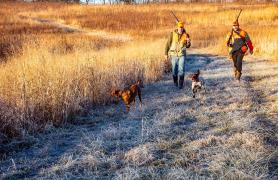
Good habitat holds hope for Missouri’s bobwhite hunting tradition
And More...
This Issue's Staff
Stephanie Thurber
EDITOR
Angie Daly Morfeld
ASSOCIATE EDITOR
Larry Archer
PHOTOGRAPHY EDITOR
Cliff White
STAFF WRITERS
Dianne Van Dien
Kristie Hilgedick
Joe Jerek
DESIGNERS
Shawn Carey
Marci Porter
PHOTOGRAPHERS
Noppadol Paothong
David Stonner
CIRCULATION MANAGER
Laura Scheuler






















